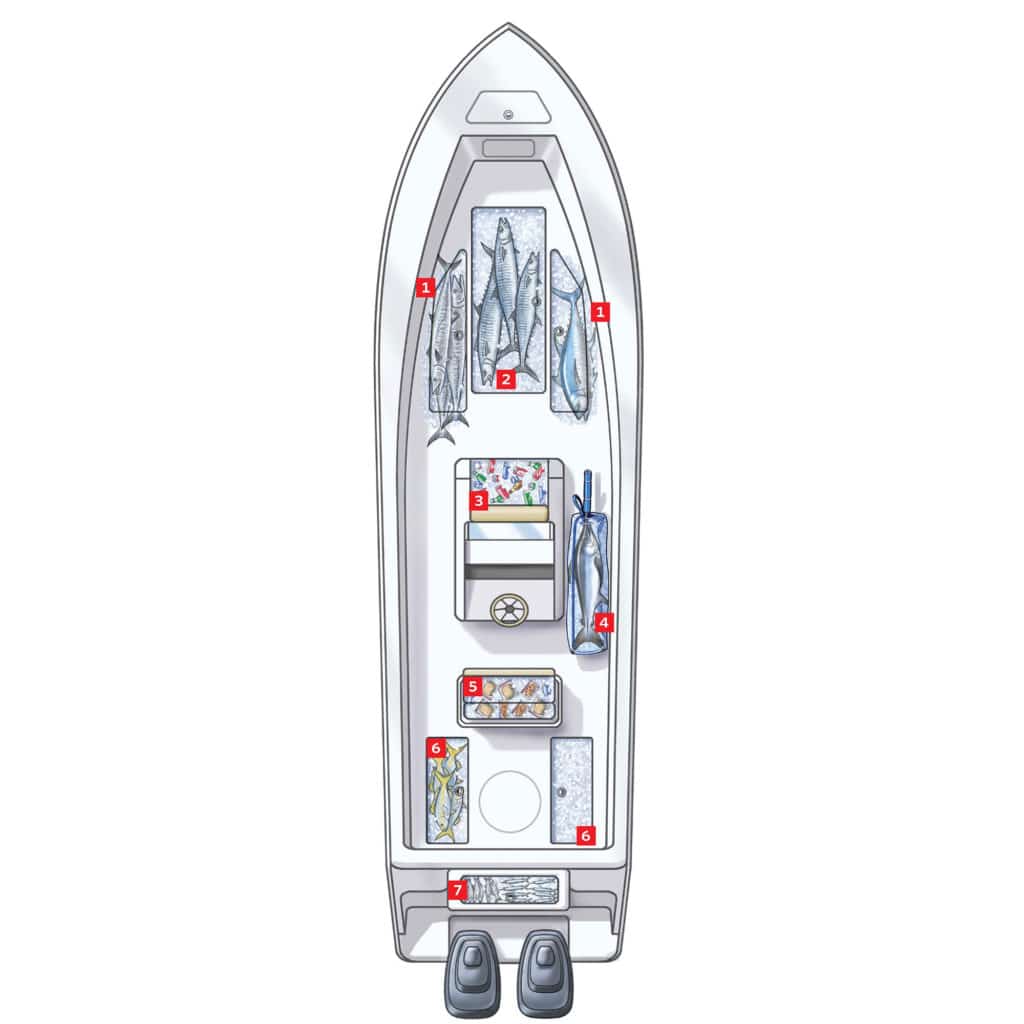
With the time and effort it often takes to go fishing, it’s a shame to not adequately ice down and store your hard-earned catch.
Failure to do so can lead to unpalatable mush on the dinner plate, or possibly thousands of dollars in prize money lost during tournaments. Several solutions to make sure both trophies and table fare stay fresh start with the boat.
Most builders pay special attention to fish boxes. Regardless of their location — deck, transom or bow compartments — the good ones are well-insulated with thick foam to keep ice as long as possible. Older boat models can be modified by spraying in expanding foam or gluing panels of closed-cell foam around the boxes, if access is available. Ideally, all fish boxes should drain overboard to evacuate blood, slime and scales. If not, macerator pumps grind the detritus before it is pumped out. Their respective hatches should fit snugly and have a watertight seal, and all interior surfaces should be smooth for easy cleaning.
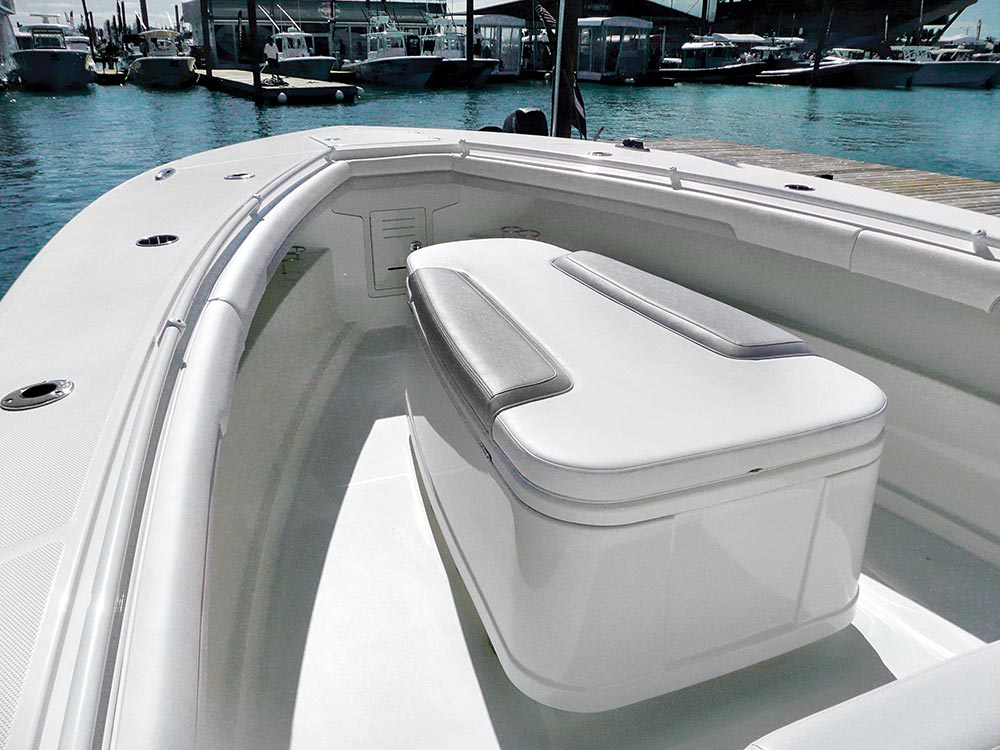
Built In
When space allows, large, abovedecks fiberglass fish boxes on the bow, commonly called coffin boxes, are extremely useful and afford additional versatility.
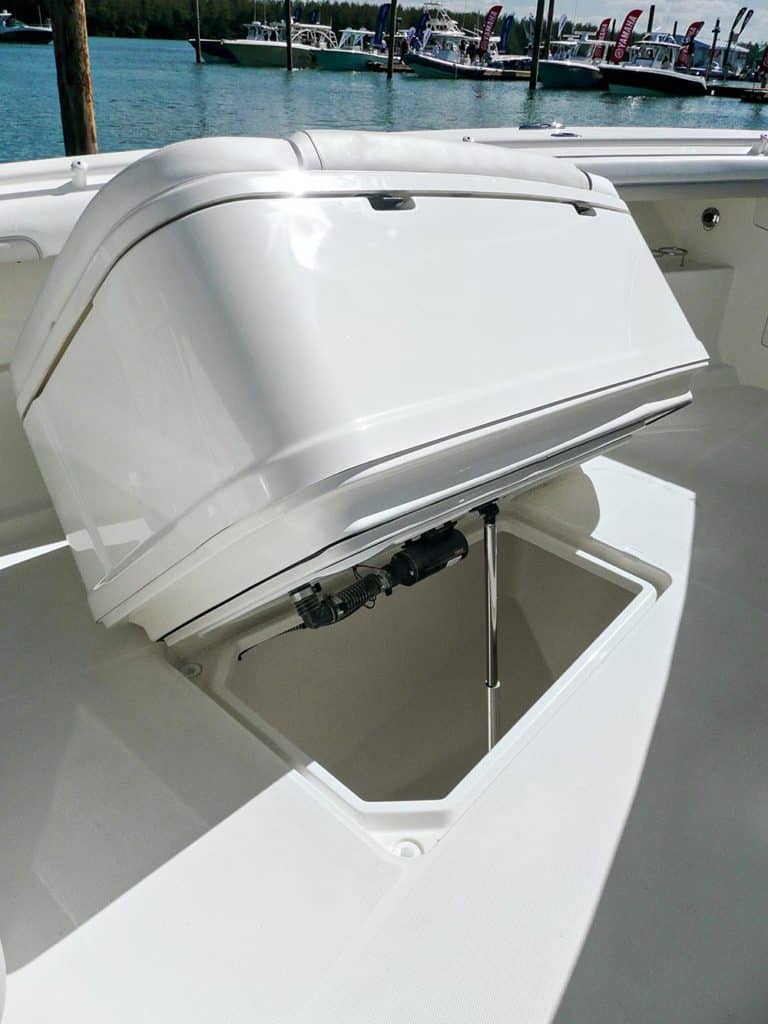
Miami-based SeaVee Boats builds its own 48-inch, 220-quart coffin box. It mounts on the forward deck hatch with a split lid so the lower compartment can be accessed separately. Electric actuators provide the lift. According to John Caballero of SeaVee, about 15 percent of SeaVee’s customers choose this option, which drains overboard and has 1-inch-thick insulation on the sides and 2 inches on the bottom.
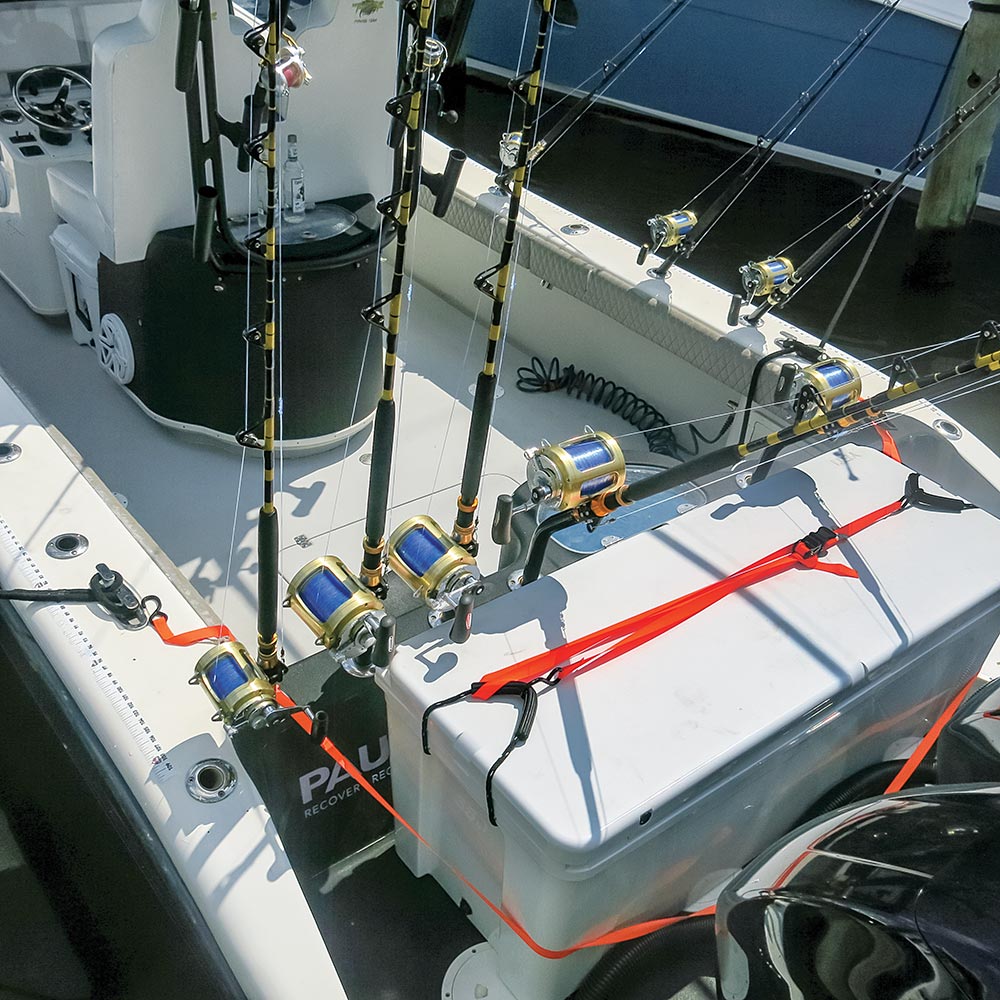
Ice Savers
The roto-molded cooler market has also radically changed storage solutions. Yeti, Engel, Orca, Pelican, K2, RTIC, Orion and most recently Otterbox are among the top brands. Actual comparison is tough, since sizes among the different makes don’t always match. All boast ice retention for days, far longer than needed for overnight or weekend trips. When shopping, compare usable interior measurements, weight and construction features, like tie-down points, latches and handles. The roto-molding process is extremely durable yet heavy, a consideration when lugging a full one down the dock. Don’t overlook marine-grade plastic coolers like the Igloo Marine Ultra either. They hold ice well, are easier to tote and reasonably priced. With any cooler, pre-chilling and opening the lids only when absolutely necessary will keep ice the longest.
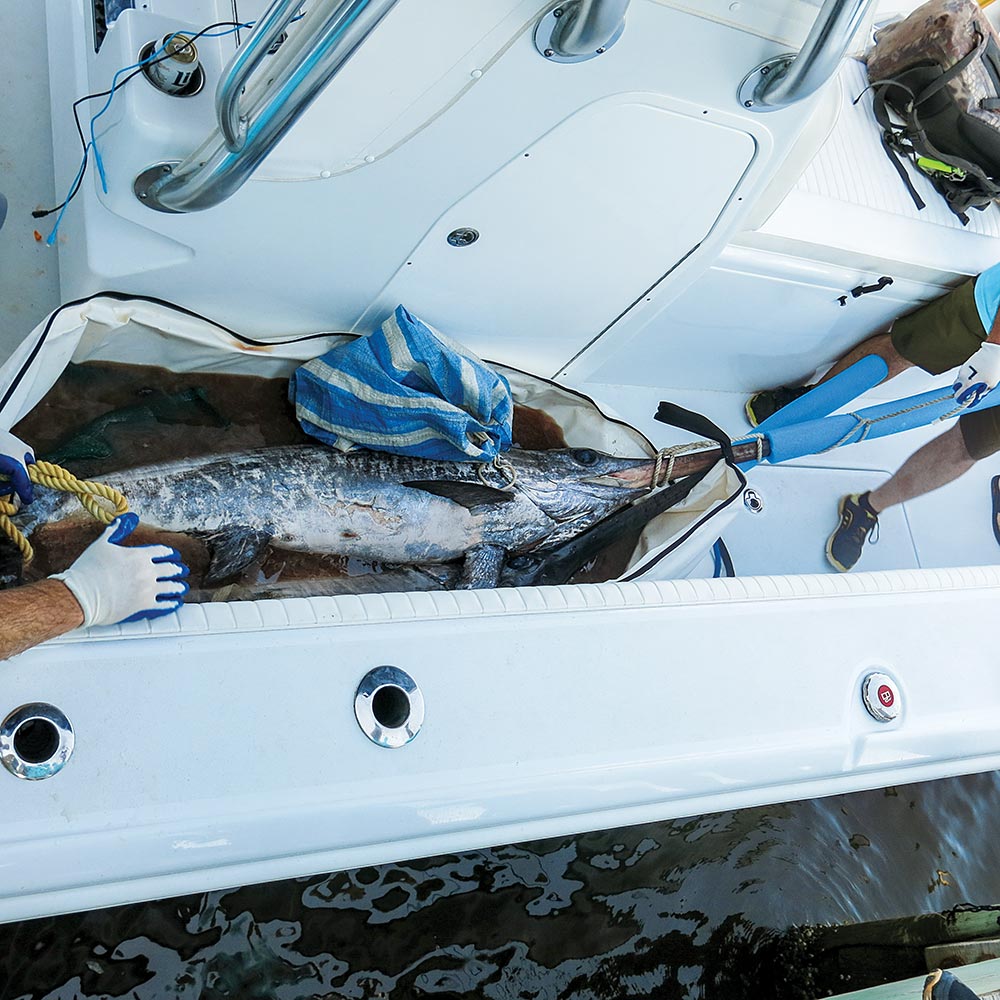
Flexibility
Foam-insulated, zippered fish-chiller bags, sized to match the intended targets, are yet another storage option. Boone, Canyon, C&H Lures and Reliable Fishing Products make bags for nearshore and offshore applications. One of the biggest advantages to bags is they can be rolled or folded when not in use. Still, a combination of boxes, coolers and bags gives the most flexibility for preserving your catch.
Combo Utility
“I’ve been using coffin boxes since 1978, first custom-built and now as a factory option on my Yellowfin 36,” says Capt. Robert “RT” Trosset of Key West. “It’s really well-insulated, so I keep over 400 pounds of ice and bait in there. My catch goes in the deck boxes, which can hold a 90-pound wahoo. I then transfer more ice from the coffin box and add a little seawater to make a slurry. It really helps keep fish cold and fresh. But you don’t want too much water or the fish slosh around, and that removes the scales.”
The macerator plumbed to the box allows Trosset to remove excess water, if necessary.
Swordfish, he says, stash easily in larger bags with the bill sticking out. During tournaments, dolphin and king mackerel slide right into iced chiller bags too, for easy transfer to the scales without weight loss.
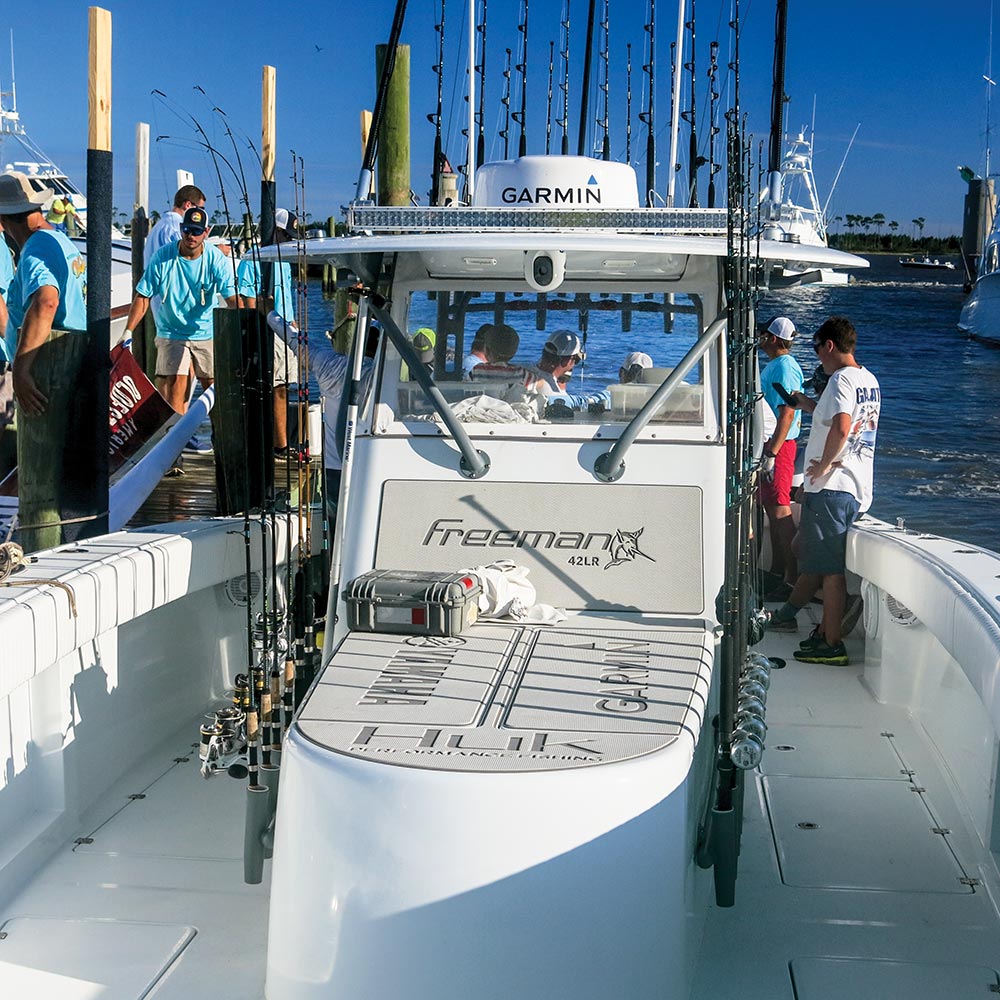
Save the Day
Neal Foster of Mobile, Alabama, often runs 1,100 miles or more round trip in his 39 Contender center-console when competing in king mackerel and big-game tournaments. His team has consistently won top prize money for smoker kings and wahoo.
“I stop at a shrimp house and pay a flat fee to totally ice down the boat,” Foster explains. “They pump ground ice into two main bags and all my fish boxes. We probably carry 1,200 pounds of ice when we’re fishing competitively.
“The two bags will hold about 125 pounds each,” he adds. “It’s important to pre-chill them first, but that crushed ice freezes into a solid mass. So we always carry a rubber mallet and plastic shovel to transfer ice between the boxes and bags. My trophy fish go into the bag as soon as they’re aboard. With thousands of dollars on the line, you don’t take any chances.”









